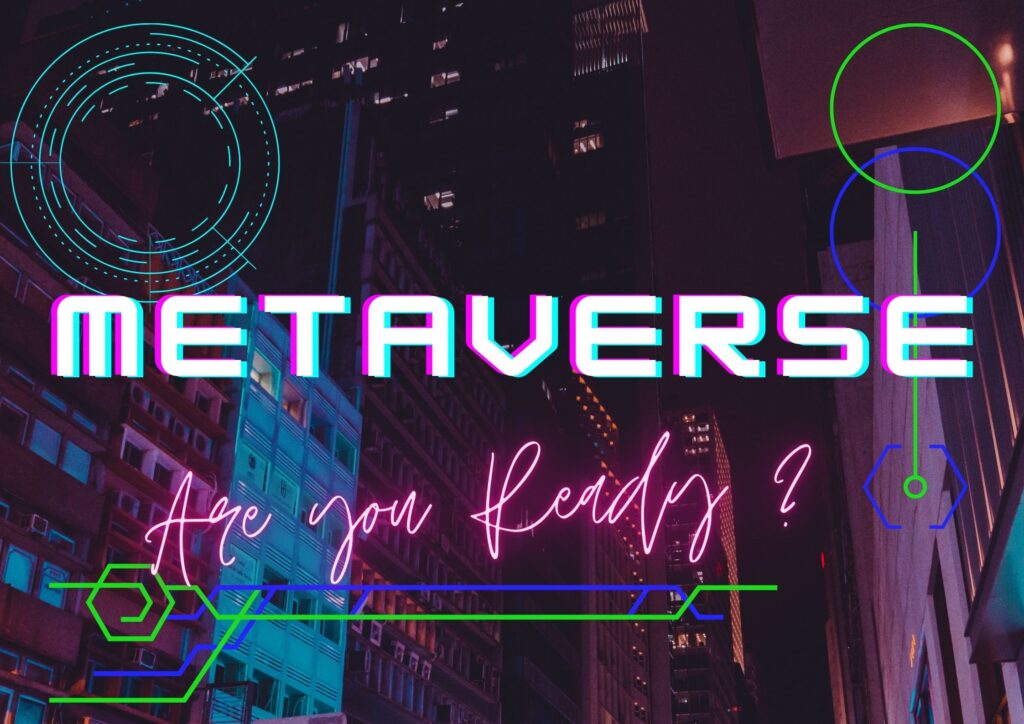Table of Contents
The Metaverse is the next step in the internet’s evolution. What is the metaverse? It’s the convergence of physical, augmented, and virtual reality in a shared online space. The Metaverse is a 4d version of our current internet and it can be thought of as an internet that you’re inside of rather than one that you’re merely looking at. The Metaverse would need a critical mass of interconnected technologies.

Facebook’s CEO is becoming ‘a metaverse company’.
Facebook Inc will invest US$50 million to partner with organizations to responsibly build the so-called metaverse – a digital world where people can use different devices to move and communicate in a virtual environment.
Facebook, the world’s largest social network, has invested heavily in virtual reality and augmented reality, developing hardware such as its Oculus Virtual reality (VR) headsets and working on Augmented reality (AR) glasses and wristband technologies. The company has been criticised for its impact on online safety.
Mark Zuckerberg is on a VR spending spree.
Facebook’s largest expenditure for multiple years now has been on VR. We don’t know exactly how much they are spending, but most people think it’s around $5 billion per year. And that’s after they spent $2 billion to buy Oculus in 2014. It’s now 7 years later and VR still hasn’t reached mass adoption. VR is an amazing technology, but it just hasn’t gotten to the point where average people can enjoy it every day. But Zuckerberg isn’t taking his foot off the gas.
He now has 20% of Facebook’s employees working on VR in some capacity. It’s a massive investment that sounds way out of line with the current market opportunity. Both Oculus and Instagram were acquired around the same time for about the same price, but Instagram brings in more than 10 times as much money for Facebook as Oculus and at a much higher margin. So why is Zuck still so obsessed with VR? Well, there are a few different reasons, but to understand them, we need to talk about the metaverse. So put let’s on our VR headsets and dive in.
What is the metaverse?
It’s a virtual environment where you can be present with people in digital spaces. What is the metaverse? You can kind of think about this as an embodied internet that you’re inside of rather than just looking at. We believe that this is going to be the successor to the mobile internet. For the past few months, everyone in tech has been talking about the metaverse non-stop. There are lots of different definitions floating around out there, but no one has done more work to popularize the term Metaverse.
The metaverse is a useful concept. It’s not just “Fortnite”, or “VR”, or “crypto”, the metaverse is an idea that ties these concepts together and seeks to explain how they all interconnect.
How will the metaverse be any different from today’s internet?
Fortunately, Matthew Ball has laid out a few key ideas that highlight what this evolved form of the internet will look like.
- First, the metaverse will be persistent, meaning that it never resets, pauses, or ends. Massively multiplayer online role-playing games are the closest thing we have currently, but not many other online experiences replicate this well. When you win a match in Fortnite, the map resets entirely, and anything you built in the game is gone forever.
- Second, the metaverse will be live. Much of the modern internet is built for asynchronous use. You can watch this YouTube video at any time for example. And pre-scheduled events will take place in the metaverse for sure, but everything will be designed to be live by default.
- Third, experiences will span both digital and physical worlds. Pokémon Go was the first massively adopted augmented reality game and that gives us a preview of what is to come.
- Fourth, there will be no cap on concurrent users. This is one of the hardest problems to solve from a technical point of view, but it’s critical. The biggest online games still restrict each session to around 100 players. Even though millions might be playing at a given time worldwide, a single server will be capped. Massive concurrency will make metaverse experiences feel very different from the present-day internet.
- Fifth, the metaverse will have a fully functioning economy. Increasingly, the internet is simply the best place to make money. Nearly every business has moved online, but there’s still a long way to go until we have a digitally native economy. Most transactions are siloed in particular virtual spaces and investment in digital goods is still in its infancy.
- Sixth, the metaverse will have unprecedented interoperability. This means being able to bring a Fortnite skin into Minecraft and vice versa. Tim Sweeney, who founded Epic Games and owns Fortnite has been talking about this for years now, and it’s clearly an important goal. These days, most internet products are walled gardens and users have no real way of moving data, items, content, or currencies between services.
- Lastly, user generated content will play a massive role in the metaverse. This is basically a requirement, since no single company could ever hope to produce enough variation in their games to satisfy everyone. Roblox and Minecraft have been so successful because community members create engaging and unique experiences for each other.
Now, you’re probably thinking that those are all incremental developments, and they are! Individually, none of them is going to really change anything about how we experience modern technology but taken together, they can create some remarkable things. That’s why treating the metaverse as “just VR” is so wrong. VR might be a foundational metaverse technology, but as we’ve seen, it’s clearly not enough.
Metaverse adaptive era
In a few years, we might point to Oculus, Fortnite, or Ethereum as the true beginning of the metaverse, but that won’t matter as much as what comes next. The iPhone moment for the metaverse will only come after we have made significant progress in several key areas of technology.
Computers need to get faster to support more realistic rendering and physics calculations.
It’s no coincidence that the biggest games all have the most simplistic graphics. Fortnite, Roblox, and Minecraft are all designed to run on basically any device, so they must be simple. Internet connections also need to get a lot stronger for the metaverse to really work. Netflix can stream to you HD video content because they can compress the footage you’re watching in advance and store the file on a server in your region.
We’ve all seen how difficult it is to maintain a stable connection even on a basic video call, and I wouldn’t call zoom an immersive experience. Most video calls are 720p, highly compressed, and 24 frames per second at best. In order for VR to feel immersive, you usually need two separate streams of near 4k video running at 120 frames per second. If internet connections get faster, the content you’re viewing in VR could be rendered on a server and then streamed to you, like how Google’s Stadia runs games in the cloud and just sends you the resulting video feed.
Hardware will need to get better and smaller, but that might be the easy part. See, computers basically get better every year. But the networks built on top of those computers only get more complicated, intertwined, and entrenched. The real promise of the metaverse is one of universality. It’s right there in the name. The verse in metaverse only works if we develop a full-fledged world that is open to anyone and encompasses everything. Tech companies are in an interesting position right now. They want to help the metaverse become a reality, but only as long as it doesn’t challenge their dominance.
Reason for investing in the metaverse
The reason that Zuckerberg is investing so heavily in the metaverse right now is that Facebook has by far the largest user base of any tech company. 3.5 billion people already use Facebook, that’s half of everyone on Earth. And all those people are creating and consuming content through Facebook apps already. This is a massive head start for Facebook, which is why Zuckerberg is happy to invest billions of dollars to make sure Facebook maintains a dominant position in what comes next. But Facebook has stiff competition.
One of the cornerstones of the metaverse will undoubtedly be payments infrastructure. The ability to buy, sell, and most importantly own things in the metaverse could be the most transformative part of this new era. Facebook hasn’t really been able to crack payments yet, but crypto certainly has. The biggest gripe most people have with Facebook is that it’s essentially controlled by a single person.
Crypto has a lot of work to do if the plan is to defeat Facebook, but metaverse-like projects are already starting to gain traction, although they are extremely small now. Even though metaverse-related crypto projects are still in their infancy, it’s totally possible that one of these projects winds up being the biggest winner, instead of an existing tech company. As we saw with the mobile internet era, there were tons of big winners, but Apple was probably the biggest winner of all. Even though Apple had been around for decades, they were in the right place at the right time and executed perfectly.
Facebook wants to build something so fundamental to the metaverse that it can capture that iPhone moment. And if they succeed, the billions they’ve invested will look like pennies. By now you should be able to understand What is the metaverse? Do remember to share this article with your friends.
